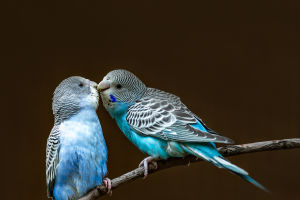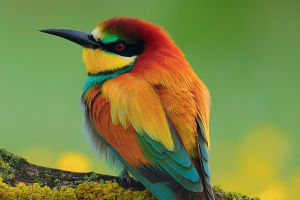The body length of the kestrel is about 30-40 cm, the wingspan is between 70-90 cm, and the weight is about 200-400 grams. They have taupe plumage and white chins and bellies.
There are black spots and stripes on the wings, which is one of their distinguishing features. Male kestrels are slightly smaller than females but are more brightly colored.
The Kestrel is a carnivore that feeds on small mammals, birds, and reptiles. They can hunt in the air or hunt their prey on the ground.
The Kestrel is a protected species whose numbers are declining due to habitat destruction and hunting. The kestrel is protected in many countries and is listed in Appendix II of the Convention on International Trade in Endangered Species of Wild Fauna and Flora.
Kestrels are solitary birds of prey that usually live alone in their territories. The following are some typical living habits of kestrels:
1. Breeding behavior: Kestrels usually start breeding in spring, and males will show off their hunting skills and special wing gestures near the nest to attract females. Kestrel nests are constructed of dry grass, twigs, and other materials, on high ground or on cliffs, and can hold 2-3 eggs.
2. Hunting behavior: Kestrels usually hunt in the morning and evening, and they use high-speed flight and sharp eyesight to catch prey. The kestrel's prey includes small mammals, birds, and reptiles, which can be caught in the air or on the ground.
3. Habitat: Kestrels can live in open areas such as wilderness, desert, mountains, and river valleys. Their habitat is usually on high ground or cliffs, and sometimes they can nest on buildings or trees.
4. Movement and Migration: Kestrels are generally non-migratory, but in some areas, they migrate to other locations due to seasonal changes or lack of prey.
5. Social Behavior: Kestrels are generally solitary creatures, but they can also mate and hunt with other kestrels during the breeding season.
Overall, kestrels are highly adaptable birds of prey whose hunting skills and ingenuity make them some of the top predators in nature.
Kestrels have many unique characteristics:
1. Extremely fast: The kestrel is one of the fastest animals in the world and can reach speeds of over 100 miles per hour while hunting for prey.
2. Powerful eyesight: Kestrels have very sharp eyesight and can spot prey at high speed, which allows them to catch prey quickly.
3. Strong adaptability: The habitat of kestrels can be a wide range of terrains and environments, including open areas such as wilderness, desert, mountains, and river valleys.
4. Superb hunting skills: Kestrel is a very clever and skilled hunter, who can use a high-speed flight, trapping, and rounding up to hunt prey.
5. Vibrant Color: Kestrels have beautiful taupe plumage with black spots and stripes, which makes them very eye-catching in flight.
6. Wide range of feeding habits: Kestrel is an omnivorous animal that can prey on a variety of prey such as small mammals, birds, and reptiles.
7. High IQ: Kestrels are very intelligent and creative birds, and their ability to learn to use tools and solve problems has made them the subject of many researchers' studies.
In short, the kestrel is a wonderful creature in nature.


